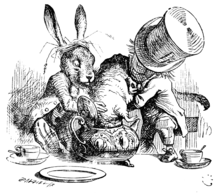
We are now, thanks to Downton Abbey and (previously) Upstairs Downstairs pretty familiar with the dynamics of master/servant relationships in the Victorian period. Even if those dramas might distort realities in some respects they offer us a view of a world that ceased to exist about a 100 years ago.
For the most part, above stairs at least, servants were deferential and obedient, and households ran fairly smoothly. Of course these dramas focus on the ‘big house’ scenario where a hierarchy of servants – from butler to scullery maid – have clearly defined roles to perform ‘above stairs’.
In reality very many households in the 1800s had just one or two servants to help them with their daily lives, and relationships here might have been a little different to those depicted in TV and film dramas.
Madeline Brett was not your typical well-behaved servant. She had joined Mrs Mary Jane Snell’s service on 23 December 1880, just before Christmas. This should have been an opportunity for young Madeline. At just 18 she now had a position in a house on Bonchurch Lane, North Kensington. In 1890 this area was marked as mostly pink to red on Charles Booth’s poverty maps, so ‘fairly comfortable’, to ‘Middle class: well-to do’.
It seems Madeline liked a drink, and this was soon very obvious to her mistress.
A few days after Christmas, on 29 December, Madeline broke a bottle she was trying to place on the table. Her speech was slurred and she could hardly walk. Mrs Snell was shocked, but she said nothing. It seems the servant had a temper and her mistress was already a little afraid of her.
However, when Madeline announced she was going to wash the china Mrs Snell begged her not to, afraid that she would break it all. This provoked the servant who pulled on a coat and went out of the front door to fetch a passing milk boy. She told him to go and get a policeman to arrest her mistress!
When the constable arrived she ranted at him and the officer was forced to subdue her; Mrs Snell then dismissed her from her service and asked her to leave. But instead of collecting her things Madeline simply stormed out returning some hours later, even more intoxicated than she had been earlier.
Mrs Snell was in her drawing room when Madeline entered carry a watering can. At first she demanded her mistress take the can upstairs, then fell over, got up, made her way to the small kitchen, and collapsed again. Mrs Snell told her to go to bed but the girl refused. Clutching some paper she said she was going to light the gas.
When Mrs Snell investigated she found pieces of burnt paper all over the house where Madeline had tried, and failed, to ignite the gas lighting. When Mrs Snell upbraided her employee Madeline ran out into the street, shouting and knocking at doors until a policeman quickly arrived and arrested her for being drunk and disorderly .
She appeared at Hammersmith Police court on 30 December where she pleaded not guilty and accused her employer of unreasonable conduct. The magistrate remanded her and she was up again three days later when Mrs Snell appeared to give her evidence. Madeline continued to protest her innocence – it ‘was a false charge’ she insisted, ‘she was drunk for the want of drink’ she told Mr Paget.
The justice not surprisingly chose to believe Mrs Snell over her servant. Madeline was sentenced to 21 days in prison with hard labour. She took this badly, fighting with the gaoler and police as they led her away, and issuing a stream of threats to her – now former – mistress as she went.
[from Lloyd’s Illustrated Newspaper, Sunday 2 January 1881]










